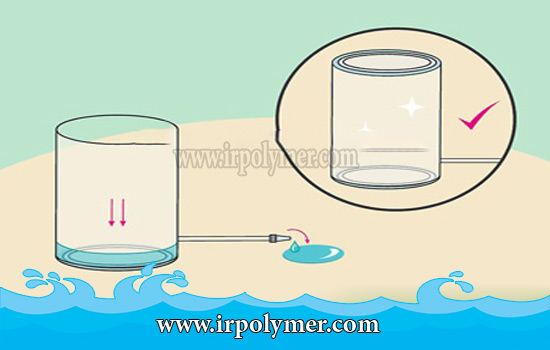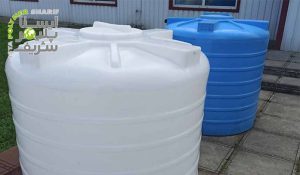Eliminating algae in water storage tanks and the instructions for doing so is an important topic that we address in this article from ABtank to help those who are facing this issue solve their problem and effectively use their water tank. If this guide is helpful to you, please share it with your friends to encourage us in content production. Using double, triple, or four-layer tanks, composite tanks, and foam-filled tanks, due to their insulation, blocking sunlight and heat transfer, helps prevent algae growth in the water.
What measures can be taken if algae develop in the tanks? Cleaning large volume water tanks is quite challenging, but if it is not done at regular intervals, algae will surely develop, and you will need to consider methods for eliminating algae in the storage tank.
Methods for Eliminating Algae in Water Storage Tanks
Algae removal methods are divided into two categories:
Physical
In the physical method, gravity can be used to separate and remove algae particles from the water. Introducing fine bubbles into the water can create flotation. Using a water filtration device with a porous surface separates algae particles from the liquid.
Chemical
Another method for eliminating algae in water storage tanks is the chemical method, which involves using chemicals and colloidal solids to create flocculation and precipitate algae, leading to separation. Macrophytes, a type of plant, stop algae growth by removing phosphorus. Barley stems and dual nanostructures also help eliminate formed algae. Using bleach and baking soda for cleaning the entire tank and removing algae is a suggested solution. This method helps eliminate sediments.
Change in Taste and Smell of Water Inside the Tank
If the taste and smell of the water inside the tank change, there is a high likelihood of algae formation. To address algae in the water storage tank, the following checks should be performed:
- If there are cracks and leaks in the tank, they should be inspected and identified, and necessary repairs should be made.
- Using dark-colored coatings on tanks prevents sunlight penetration and algae formation.
- If bleach or baking soda is used to clean the tank’s interior surface, these materials should be applied to brushes and sponges to clean the interior surface of the tank, removing algae adhered to the tank walls.
- Then, proceed to wash the tank with bleach. For example, in a 1000-gallon tank, pour one gallon of bleach and fill the remaining volume with water. Let this solution stay in the tank for 24 hours for disinfection. Then empty the tank. Rinse several times with high-pressure clean water.
It is worth noting that prevention is always less costly than repairs. Therefore, preventing algae growth in the water is less expensive and time-consuming than removing algae once it has developed. As a result, it is better to use advanced technology in water tanks rather than traditional tanks with connections and inadequate insulation. Plastic tanks, such as polyethylene tanks with multi-layer and foam-filled options, with a dark inner layer, prevent algae formation.






